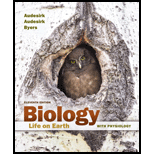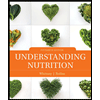
A student rescan, her decides to perform an experiment on the effect of the thyroid gland on frog metamorphosis. She sets up three aquaria with tadpoles. She adds thyroxine to the water of one, the drug thiouracil to a second, and nothing to the third. Thiouracil destroys thyroxine. Assuming that the student uses appropriate concentrations, predict what will happen.
To predict:
The things that might happen to three sets of tadpoles when the first set is grown in presence of thyroxine, the second set is grown in presence of thiouracil, and third is grown in normal water.
Introduction:
In the given scenario, a researcher wants to conduct an experiment on the effect of the thyroid gland in metamorphosis in the frog. For her experiment, she sets up three aquaria. In the first aquarium, she added thyroxine. In the second aquarium she added thiouracil and in the third nothing was added.
Explanation of Solution
The metamorphosis can be defined as the process through which the newborn animal physically develops into an adult by undergoing several changes. It is the feature of all the chordates and is induced by iodothyronine.
Thyroxine induces metamorphosis in the frog. In the aquarium in which thyroxine was added; the tadpoles will metamorphose into frog earlier than the normal tadpoles. Thiouracil destroys the thyroxine, thereby inhibiting the metamorphosis. So the tadpoles growing in the aquarium containing thiouracil will not show metamorphosis.
The thyroid gland of tadpoles produces a normal amount of thyroxine, which is sufficient to induce metamorphosis. So the tadpoles growing in the aquarium containing normal water will metamorphose at a normal rate.
The tadpoles growing in normal water will undergo metamorphosis at a normal rate, the tadpoles grown in presence of thyroxine will have metamorphosis earlier than normal. The tadpoles grown in presence of thiouracil will not undergo metamorphosis as it would be inhibited by thiouracil.
Want to see more full solutions like this?
Chapter 38 Solutions
Biology: Life on Earth with Physiology (11th Edition)
Additional Science Textbook Solutions
Genetics: From Genes to Genomes
Biological Science (6th Edition)
Campbell Essential Biology (7th Edition)
Campbell Biology in Focus (2nd Edition)
- How is a protein destined for the Endoplasmic Reticulum (ER), imported into the ER? Be concise.arrow_forwardFind out about the organisations and the movements aimed at the conservation of our natural resources. Eg Chipko movement and Greenpeace. Make a project report on such an organisation.arrow_forwardWhat are biofertilizers and mention the significancearrow_forward
- PCBs and River Otters: Otters in Washington State’s Green-Duwamish River have high levels of polychlorinated biphenyls (PCBs) in their livers. PCBs can bind to the estrogen receptors in animals and disrupt the endocrine system of these otters. The PCBs seem to increase the estrogen to androgen ratio, skewing the ratio toward too much estrogen. How would increased estrogen affect the river otter population? Based on your reading of the materials in this unit, what factors can affect fertility in humans? Explain how each of the factors affecting human fertility that you described can disrupt the human endocrine system to affect reproduction.arrow_forwardOther than oil and alcohol, are there other liquids you could compare to water (that are liquid at room temperature)? How is water unique compared to these other liquids? What follow-up experiment would you like to do, and how would you relate it to your life?arrow_forwardSelection of Traits What adaptations do scavengers have for locating and feeding on prey? What adaptations do predators have for capturing and consuming prey?arrow_forward
- Competition Between Species What natural processes limit populations from growing too large? What are some resources organisms can compete over in their natural habitat?arrow_forwardSpecies Interactions Explain how predators, prey and scavengers interact. Explain whether predators and scavengers are necessary or beneficial for an ecosystem.arrow_forwardmagine that you are conducting research on fruit type and seed dispersal. You submitted a paper to a peer-reviewed journal that addresses the factors that impact fruit type and seed dispersal mechanisms in plants of Central America. The editor of the journal communicates that your paper may be published if you make ‘minor revisions’ to the document. Describe two characteristics that you would expect in seeds that are dispersed by the wind. Contrast this with what you would expect for seeds that are gathered, buried or eaten by animals, and explain why they are different. (Editor’s note: Providing this information in your discussion will help readers to consider the significance of the research).arrow_forward
 Human Physiology: From Cells to Systems (MindTap ...BiologyISBN:9781285866932Author:Lauralee SherwoodPublisher:Cengage Learning
Human Physiology: From Cells to Systems (MindTap ...BiologyISBN:9781285866932Author:Lauralee SherwoodPublisher:Cengage Learning Human Biology (MindTap Course List)BiologyISBN:9781305112100Author:Cecie Starr, Beverly McMillanPublisher:Cengage Learning
Human Biology (MindTap Course List)BiologyISBN:9781305112100Author:Cecie Starr, Beverly McMillanPublisher:Cengage Learning- Essentials of Pharmacology for Health ProfessionsNursingISBN:9781305441620Author:WOODROWPublisher:Cengage
 Understanding Nutrition (MindTap Course List)Health & NutritionISBN:9781337392693Author:Eleanor Noss Whitney, Sharon Rady RolfesPublisher:Cengage Learning
Understanding Nutrition (MindTap Course List)Health & NutritionISBN:9781337392693Author:Eleanor Noss Whitney, Sharon Rady RolfesPublisher:Cengage Learning





